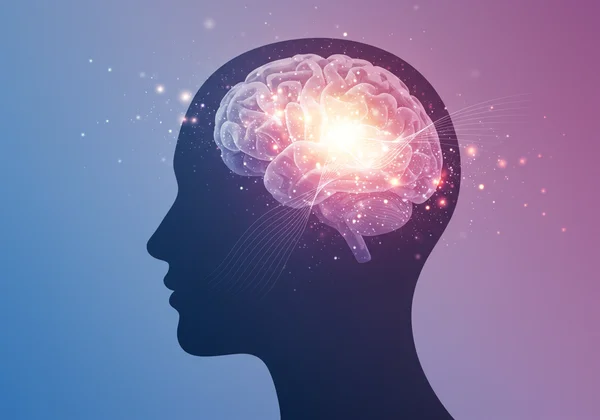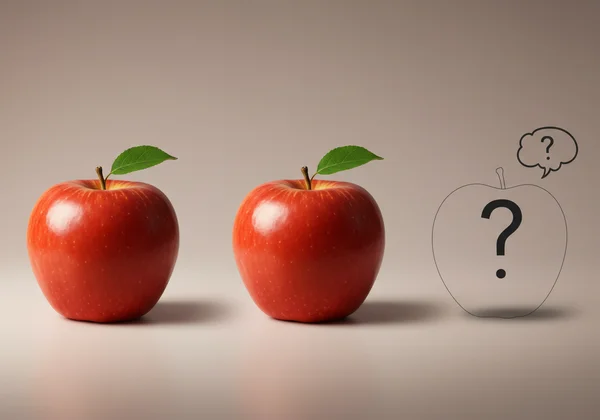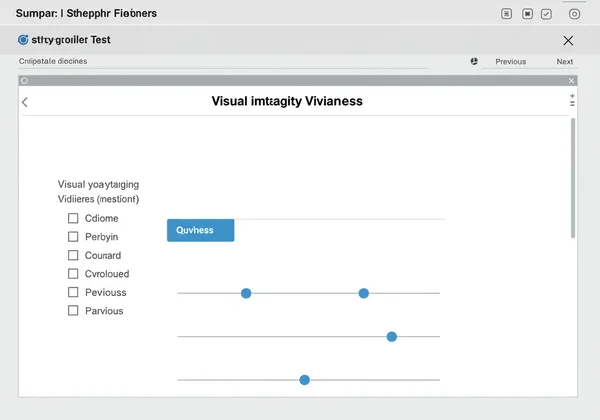Aphantasia Test: Your Guide to Self-Assessment
Explore Your Mind's Eye: Uncovering Aphantasia
Have you ever found yourself struggling to visualize simple things, like a friend's face or the layout of your childhood home, even when others describe vivid mental images? Perhaps you've wondered, how to tell if you have aphantasia? This unique cognitive difference means having a reduced or complete inability to form voluntary mental images. For many, it's a surprising discovery, leading to questions about their own mind's inner workings. If you suspect your mind's eye might be different, a reliable aphantasia test can be your first step toward understanding your unique cognitive landscape. This guide will walk you through various self-assessment methods and introduce you to a trustworthy online resource that can help you explore your visual imagination. Ready to begin your journey? Start your test now.

What is Aphantasia & Why Consider Testing?
Aphantasia, often described as having a "blind mind's eye," is a fascinating variation in human cognition. While most people can easily conjure mental images—recalling the color of a specific object or imagining a future event—individuals with aphantasia experience little to no conscious visual imagery. This doesn't mean they can't think or remember; rather, their thought processes rely on concepts, facts, and verbal descriptions instead of mental pictures.
Recognizing the Signs of a "Blind Mind's Eye"
The signs of aphantasia are often subtle and can go unnoticed until someone else describes their vivid inner world. Do you struggle to remember faces, only recalling facts about a person rather than their appearance? When reading a novel, do you process the story through abstract concepts rather than seeing the scenes unfold in your head? These could be indicators of a mind blindness test showing a lower capacity for visual imagery. Many people with aphantasia report that they were surprised to learn that others could "see" images in their heads.
The Journey of Self-Discovery & Cognitive Exploration
Considering an aphantasia self-assessment isn't about finding a "defect." Instead, it's a journey of self-discovery, embracing the rich diversity of human cognition. Understanding whether you experience aphantasia can offer profound insights into your learning style, memory strategies, and even your creative process. It empowers you to navigate the world in a way that suits your unique mind, fostering acceptance and curiosity about how different brains experience reality. Every mind is unique, and exploring yours is a valuable endeavor.
Informal Aphantasia Tests You Can Try at Home
Before diving into more structured assessments, several simple exercises can offer a preliminary glimpse into your visual imagination. These informal simple aphantasia test methods are a great starting point for anyone curious about their mind's eye.
The Classic "Apple Test" Explained
One of the most widely discussed informal assessments is the aphantasia apple test. Here’s how to try it: Close your eyes and try to visualize an apple. Don't just think about an apple; try to see it. Can you see its color, its shape, the subtle bumps or bruises on its skin? Can you rotate it in your mind, change its color, or even imagine biting into it?

- Vivid Imagery: You can clearly see a bright red apple, almost as if it's in front of you. You can manipulate its appearance easily.
- Faint Imagery: You can vaguely see an apple, but it's blurry, fleeting, or lacks detail.
- No Imagery: You can think of the concept of an apple, know its characteristics, but no visual image appears in your mind's eye.
This quick exercise gives you a personal baseline for your ability to voluntarily generate mental images.
Other Simple Visual Imagery Exercises
Beyond the apple, you can try similar exercises with various objects or scenarios to get a broader sense of your visual imagination. Try visualizing:
- A familiar face: Can you see the details of a loved one's face when you close your eyes?
- Your bedroom: Can you "walk" through your room in your mind, seeing the furniture and decorations?
- A beach scene: Can you picture the sand, the waves, and the horizon?
These exercises are designed to prompt your visual system and help you reflect on the presence and vividness of any images that arise. If you consistently find yourself unable to conjure such images, it might suggest aphantasic tendencies. For a more comprehensive exploration, consider an online aphantasia test.
The Scientific Approach to Visual Imagery Assessment
While informal tests are a good starting point, a more structured and scientifically inspired approach offers greater depth and reliability for visual imagery vividness test. These assessments often draw from established psychological research to provide a more nuanced understanding of an individual's visual imagination.
Understanding the VVIQ Test Online & Its Role
A cornerstone of visual imagery assessment is the Vividness of Visual Imagery Questionnaire (VVIQ). This questionnaire asks you to rate the vividness of various mental images on a scale, covering different categories like people, objects, and scenes. A VVIQ test online is designed to quantify the strength and clarity of your mental images, from perfectly clear to completely absent. It's an essential tool that researchers use to study mental imagery and helps provide a robust framework for self-assessment. Our free aphantasia test is inspired by these proven scientific principles.
Why Scientific Principles Matter in Self-Assessment
Relying on scientific principles ensures that your self-assessment is grounded in research rather than anecdotal evidence. It provides a standardized way to evaluate your experiences, allowing for more consistent and meaningful results. When considering how to test for aphantasia, methods rooted in established psychology offer a more trustworthy path to understanding. While a self-assessment cannot provide a clinical diagnosis, it offers valuable insights, helping you align your personal experiences with broader cognitive patterns identified by science.
Your Free Online Aphantasia Self-Assessment
If you're ready for a structured and reliable aphantasia self-assessment, our platform offers a free, science-inspired tool designed to help you explore your unique visual imagination. Our platform is built on principles derived from established research, including the VVIQ, ensuring a valuable and insightful experience.
How Our Test Works

Taking the test for aphantasia on our website is straightforward and user-friendly. You'll answer a series of thoughtfully designed questions that assess the vividness of your mental imagery across different scenarios. The process is intuitive, guiding you through each question to help you reflect on your internal experiences. Once completed, you'll receive an initial score and an explanation of what it suggests about your visual imagination. For those who wish to delve deeper, an optional AI-driven personalized analysis report can reveal even more about your cognitive traits, strengths, and potential challenges. To begin your assessment, visit our homepage and start your visual exploration.
Interpreting Your Results: What They Reveal About Your Mind's Eye
After completing the aphantasia test, your results will provide a clearer picture of your visual imagery capabilities. A low score generally indicates aphantasia, while a high score suggests hyperphantasia (very vivid imagery). The scores are not diagnostic but serve as a guide for self-reflection. They can help affirm your experiences if you've long suspected differences in your imagination, or simply offer a fascinating insight into your mind's unique way of processing the world. Remember, understanding your cognitive profile is an empowering step towards self-acceptance and growth.
What's Next: Your Journey of Self-Discovery
Understanding your mind's eye—whether it's vivid or non-existent—unlocks powerful self-knowledge. A reliable aphantasia test is your valuable entry point into this fascinating aspect of human cognition. From simple at-home exercises to scientifically inspired online assessments, there are multiple ways to explore your visual imagination.
This platform offers a free aphantasia test that is both accessible and based on scientific principles. It's a reliable tool for anyone curious about their own internal visual world. Taking this test can be the start of a deeper understanding of your cognitive strengths and how you uniquely interact with information.
Don't let curiosity linger. Take the decisive step to uncover the mysteries of your mind's eye. Visit our site today to take your free test and embark on a compelling journey of self-discovery.
Frequently Asked Questions About Aphantasia Self-Assessment
How do I tell if I have aphantasia?
The primary way to tell if you have aphantasia is through self-reflection on your ability to form voluntary mental images. If you consistently find that you cannot conjure visual images in your mind, despite trying, it's a strong indicator. Tools like the aphantasia test available here can provide a structured self-assessment.
Are online aphantasia tests accurate?
Online aphantasia self-assessment tools, especially those based on scientific principles like the VVIQ, can be highly accurate for self-reflection. They provide a standardized way to evaluate your visual imagery experience. While they are not clinical diagnostic tools, they offer reliable insights into your cognitive profile.
What's the "Apple Test" for aphantasia?
The aphantasia apple test is a simple informal exercise where you close your eyes and attempt to visualize an apple. You reflect on how vivid, clear, and manipulable the image is in your mind's eye. If you cannot conjure any visual image of the apple, it might suggest aphantasia.
Can aphantasia be diagnosed by a professional?
Currently, there is no formal clinical diagnosis for aphantasia. It is primarily identified through self-report and psychometric assessments. While professionals in psychology or neuroscience can guide you, the experience is largely subjective. Our online aphantasia test offers a strong self-assessment tool.
What are common traits of people with aphantasia?
People with aphantasia often report difficulties with facial recognition, remembering past events vividly (often recalling facts rather than sensory details), and sometimes challenges in tasks requiring strong visualization like drawing from memory. However, many also excel in areas like abstract thinking, logical reasoning, and verbal memory.
Disclaimer: This article is for informational purposes only and should not be considered a substitute for professional medical, psychological, or diagnostic advice. If you have concerns about your cognitive health, please consult a qualified professional.